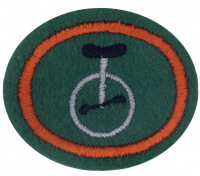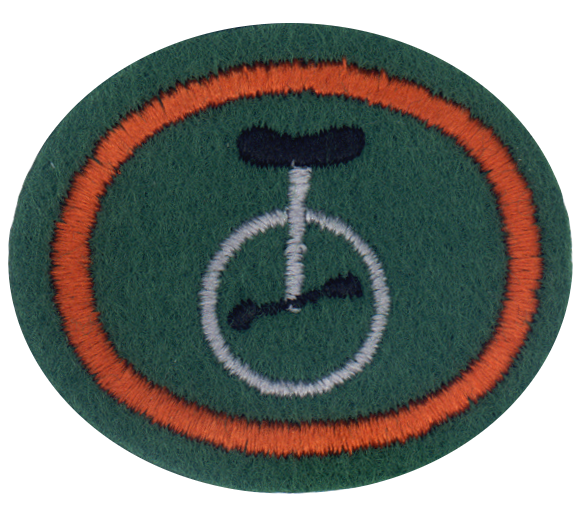|
|
| (15 intermediate revisions by 2 users not shown) |
| Line 1: |
Line 1: |
| − | <languages /><br />
| + | {{HonorSubpage}} |
| − | <noinclude></noinclude>
| + | <!--{{Honor Master|honor={{#titleparts:{{PAGENAME}}|1|3}}|master=Recreation}}--> |
| − | {{honor_desc/es | |
| − | |stage=00
| |
| − | |honorname=Monociclismo
| |
| − | |skill=2
| |
| − | |year=2008
| |
| − | |category=Actividades recreacionales
| |
| − | |authority=Asociación General
| |
| − | |insignia=Unicycle_Honor.png
| |
| − | }} | |
| − | | |
| − | {{Honor Master/es|honor=Monociclismo|master=Recreación}} | |
| − | | |
| − | | |
| − | <noinclude></noinclude>
| |
| | <section begin="Body" /> | | <section begin="Body" /> |
| | {{ansreq|page={{#titleparts:{{PAGENAME}}|2|1}}|num=1}} | | {{ansreq|page={{#titleparts:{{PAGENAME}}|2|1}}|num=1}} |
| Line 27: |
Line 13: |
| | <noinclude></noinclude> | | <noinclude></noinclude> |
| | {{ansreq|page={{#titleparts:{{PAGENAME}}|2|1}}|num=2a}} | | {{ansreq|page={{#titleparts:{{PAGENAME}}|2|1}}|num=2a}} |
| − | <noinclude></noinclude> | + | <noinclude></noinclude><noinclude></noinclude> |
| − | Mounting the unicycle without having to hold on to anything.
| |
| − | <noinclude></noinclude> | |
| | {{CloseReq}} <!-- 2a --> | | {{CloseReq}} <!-- 2a --> |
| | {{ansreq|page={{#titleparts:{{PAGENAME}}|2|1}}|num=2b}} | | {{ansreq|page={{#titleparts:{{PAGENAME}}|2|1}}|num=2b}} |
| − | <noinclude></noinclude> | + | <noinclude></noinclude><noinclude></noinclude> |
| − | Basically sitting on your unicycle with little or no movement, but not dismounted.
| |
| − | <noinclude></noinclude> | |
| | {{CloseReq}} <!-- 2b --> | | {{CloseReq}} <!-- 2b --> |
| | {{ansreq|page={{#titleparts:{{PAGENAME}}|2|1}}|num=2c}} | | {{ansreq|page={{#titleparts:{{PAGENAME}}|2|1}}|num=2c}} |
| | <noinclude></noinclude> | | <noinclude></noinclude> |
| − | '''U'''n'''P'''lanned '''D'''ismount aka falling off.
| |
| | | | |
| | <noinclude></noinclude> | | <noinclude></noinclude> |
| Line 45: |
Line 26: |
| | {{ansreq|page={{#titleparts:{{PAGENAME}}|2|1}}|num=3}} | | {{ansreq|page={{#titleparts:{{PAGENAME}}|2|1}}|num=3}} |
| | <noinclude></noinclude> | | <noinclude></noinclude> |
| − | <!-- 3. Know what safety gear one should use while unicycling and why one should use it. --> | + | <!-- 3. Saber qué equipo de seguridad se debe utilizar mientras se utiliza el monociclo y por qué se debe utilizar. --> |
| − | :;Wrist guards: The most common impact points when falling from a unicycle are the hands and wrists. Of all the safety gear, wrist guards receive the most wear and tear.
| |
| − | :;Knee and elbow pads: The second most common impact point are the knees followed by the elbows.
| |
| − | :;Helmet: A helmet is especially important with specialty riding like Mountain Unicycling, and in some jurisdictions is required for road riding.
| |
| − | :;Shin guards: Shin guards become a necessary piece of equipment when using metal or pinned pedals. These types of pedals grip the shoes better, but can cause injury to the legs.
| |
| − | :;Cycling shorts: Padded cycling shorts are designed with a seamless, padded crotch, and long enough legs to extend down past the saddle, making them much more comfortable than "normal" shorts.
| |
| − | :;Gloves: Gloves are required for certain unicycling events such as racing. Gloves may be fingerless.
| |
| | <noinclude></noinclude> | | <noinclude></noinclude> |
| | {{CloseReq}} <!-- 3 --> | | {{CloseReq}} <!-- 3 --> |
| | {{ansreq|page={{#titleparts:{{PAGENAME}}|2|1}}|num=4}} | | {{ansreq|page={{#titleparts:{{PAGENAME}}|2|1}}|num=4}} |
| | <noinclude></noinclude> | | <noinclude></noinclude> |
| − | <!-- 4. Name 5 different types of unicycles and explain what makes them unique. --> | + | <!-- 4. Nombrar cinco diferentes clases de monociclos y explicar lo que los hace distintos. --> |
| − | ; Freestyle Unicycle : Generally used for flatland skills and routines. Usually has a relatively high seatpost, a narrow saddle, a squared fork (used for one-footed tricks), and [[W:cotter|cotter]]-less cranks, as they do not need to withstand very much pressure. These unicycles are used similarly to flatland bicycles. Some examples of freestyle unicycles include Miyata, Nimbus, Schwinn, and Semcycle brands. Prices typically range from US$100 to $300. Wheel size is usually 20 inches, but smaller riders may use 16-inch unicycles. Some people prefer 24-inch wheels.
| |
| − | ;Trials unicycle: Designed for [[W:unicycle trials|unicycle trials]], trials unicycles are stronger than standard unicycles in order to withstand the stresses caused by jumping, dropping, and supporting the weight of the unicycle and rider on components such as the pedals and cranks. A recent development in trials unicycles is [[W:Rotating spline|splined]] cranks and hubs, a feature that is very useful and somewhat expensive. Many trials unicycles also have wide, 19- or 20-inch knobby tires to absorb some of the impact on drops.
| |
| − | ; Offroad Unicycles ("MUnis") : "MUni" is an abbreviation for [[W:mountain unicycling|mountain unicycling]]. MUnis have many of the same components as trials unicycles, but have a few key differences. Usually, the tire diameters on mountain unicycles are either 24 or 26 inches, allowing the rider to more easily roll over obstacles such as roots and rocks. The seat is also thicker and more comfortable on MUnis to compensate for the rough terrain. Brakes are sometimes used for steep descents.
| |
| − | ; Touring Unicycles : Used for long distances, these unicycles are specially made to cover distances. They have a large wheel diameter, between 26 and 36 in., so more distance is covered in less pedal rotation. A 36" unicycle made by the [[W:Coker Tire|Coker Tire]] company started the big wheel trend. Some variations on the traditional touring unicycle include the Schlumpf "GUni" (geared unicycle), which uses a two-speed internal fixed-geared hub. Larger direct-drive wheels tend to have shorter cranks to allow for easier cadence and more speed. Geared wheels, with an effective diameter larger than the wheel itself, tend to use longer cranks for control, as the speed comes from the gear ratio, not the wheel itself.
| |
| | | | |
| − | '''Variations here''' -> http://en.wikipedia.org/wiki/Unicycling#Variations, while I think it over.
| + | {{clear}} |
| | | | |
| | <noinclude></noinclude> | | <noinclude></noinclude> |
| Line 68: |
Line 39: |
| | {{ansreq|page={{#titleparts:{{PAGENAME}}|2|1}}|num=5}} | | {{ansreq|page={{#titleparts:{{PAGENAME}}|2|1}}|num=5}} |
| | <noinclude></noinclude> | | <noinclude></noinclude> |
| − | <!-- 5. How is unicycling thought to have been invented? --> | + | <!-- 5. ¿Cómo se cree que se inventaron los monociclos? --> |
| − | [[Image:Ordinary bicycle01.jpg|thumb|right|A ''penny farthing'' or ''ordinary bicycle'']]
| |
| − | The unicycle's history began before the invention of the bicycle. The Comte De Gaye first developed unicycles during the late 18th century. His device, called a celerifere, was a wooden horse that had two wheels joined by a wooden beam. Germany's Baron von Drais improved the design by adding a steering mechanism, introducing his Draisienne or "Hobby Horse" in 1818. Kirkpatrick Macmillan, a Scottish blacksmith, added cranks and pedals to the rear wheel in 1839, and called it the Velocipede. The first mass-produced riding machine, the Michaux Velocipede, was designed in 1863. In 1866, James Starley developed the penny-farthing, a bicycle with a very large front wheel and a small rear wheel.
| |
| | | | |
| − | One theory of the advent of the unicycle is based on the popularity of the penny-farthing (or "Ordinary") during the late 19th century. Since the pedal and cranks were connected directly to the front axle, the rear wheel would go up in the air and the rider would be moved slightly forward. Many penny-farthing owners discovered they could dispense with the frame and just ride the front wheel and handlebars. Evidence for this theory of development can reportedly be found in pictures from the late 19th century showing unicycles with large wheels.
| + | {{clear}} |
| | | | |
| − | Over the years, unicycle enthusiasts have inspired manufacturers to create new designs, such as seatless ("ultimate wheel") and tall ("giraffe") unicycles. During the late 1980s some extreme sportsmen took an interest in the unicycle and off-road unicycling (MUni) was born.
| + | {{clear}} |
| | | | |
| | <noinclude></noinclude> | | <noinclude></noinclude> |
| Line 80: |
Line 49: |
| | {{ansreq|page={{#titleparts:{{PAGENAME}}|2|1}}|num=6}} | | {{ansreq|page={{#titleparts:{{PAGENAME}}|2|1}}|num=6}} |
| | <noinclude></noinclude> | | <noinclude></noinclude> |
| − | <!-- 6. Repair a punctured unicycle tire --> | + | <!-- 6. Reparar un neumático pinchado de un monociclo. --> |
| − | {{:Adventist Youth Honors Answer Book/Tire repair}} | + | {{:AY Honors/Tire repair/es}} |
| | | | |
| | <noinclude></noinclude> | | <noinclude></noinclude> |
| Line 87: |
Line 56: |
| | {{ansreq|page={{#titleparts:{{PAGENAME}}|2|1}}|num=7}} | | {{ansreq|page={{#titleparts:{{PAGENAME}}|2|1}}|num=7}} |
| | <noinclude></noinclude> | | <noinclude></noinclude> |
| − | <!-- 7. Be able to free mount, ride 50 meters/150 feet, turn right and left, and gracefully dismount, all without falling off. --> | + | <!-- 7. Ser capaz de montar libremente, andar 50 metros/150 pies, girar a la derecha y a la izquierda, y con gracia desmontarse, todo sin caerse. --> |
| | | | |
| − | This will take some practice, so get practicing.
| + | {{clear}} |
| | | | |
| | <noinclude></noinclude> | | <noinclude></noinclude> |
| | {{CloseReq}} <!-- 7 --> | | {{CloseReq}} <!-- 7 --> |
| | <noinclude></noinclude> | | <noinclude></noinclude> |
| − | ==References== | + | ==Referencias== |
| − | * http://en.wikipedia.org/wiki/Unicycling
| |
| | <noinclude></noinclude> | | <noinclude></noinclude> |
| − | <section end="Body" />
| + | {{CloseHonorPage}} |


